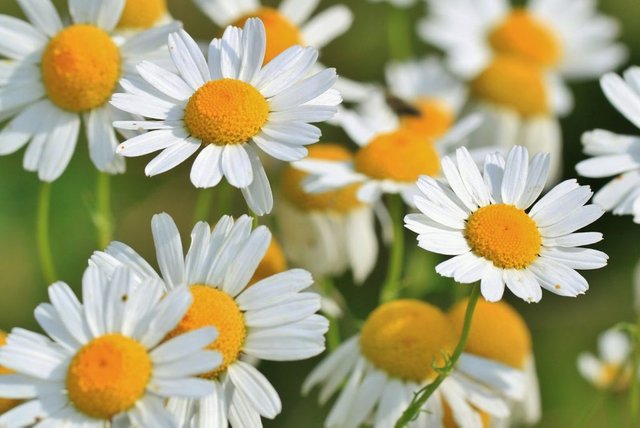
With a fruity, floral, aromatic fragrance, Camomile is in the daisy family. A native to Asia’s western areas, this flower is known to grow freely and proliferately everywhere. With its various medicinal uses, this flower is considered an essential remedy in central Europe. Blue chamomile oil is known to be very soothing, with the addition of dried flowers that can produce a relaxing infusion.
Chamomile (American English) or camomile (British English; see spelling differences) (/ˈkæməmaɪl, -miːl/ KAM-ə-myl or KAM-ə-meel), is the common name for several daisy-like plants of the family Asteraceae. Two of the species, Matricaria recutita, and Anthemis nobilis are commonly used to make herbal infusions for traditional medicine. Although there is insufficient scientific evidence that consuming chamomile in foods or beverages has any beneficial effect on health, Chamomile is famous for its traditional use in a variety of applications. Many individuals advocate and utilize chamomile flower dry powder for numerous conventional health issues due to its anti-inflammatory, antioxidant & mild astringent properties.
The chamomile plant is known to be susceptible to many fungi, insects, and viruses. Fungi such as Albugo tragopogonis (white rust), Cylindrosporium matricariae, Erysiphe cichoracearum (powdery mildew), and Sphaerotheca macularis (powdery mildew) are known pathogens of the chamomile plant. Aphids have been observed feeding on chamomile plants and the moth Autographa chryson causes defoliation.
Authors get paid when people like you upvote their post.
If you enjoyed what you read here, create your account today and start earning FREE STEEM!
If you enjoyed what you read here, create your account today and start earning FREE STEEM!